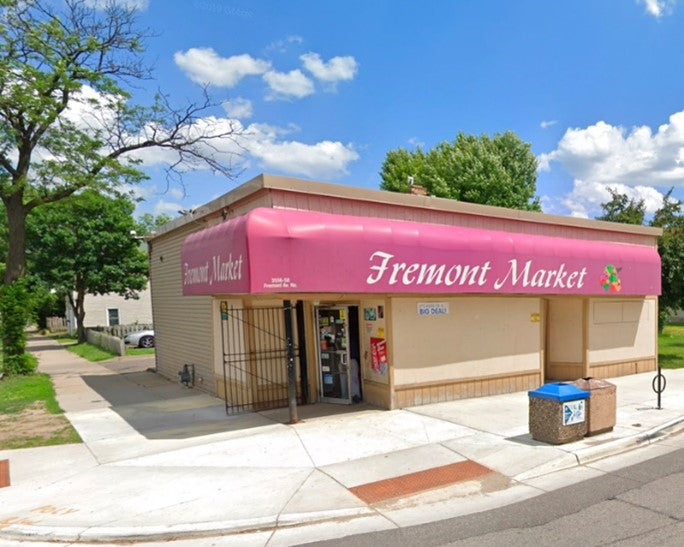Since 2014, BrightSide has delivered fruits and vegetables to corner stores in underserved neighborhoods. These deliveries are a main part of fulfilling our mission to reduce urban food insecurity by uniting people and communities in common purpose.

But why do we focus on corner stores (e.g., like Fremont Market in north Minneapolis, pictured at right)? The simple reason is that 1) people need affordable options to make healthy food choices, and 2) healthy foods are least affordable in poorer urban neighborhoods where diet-related health conditions are most common. Ugh! Where healthy food is needed the most is where it is least available. Corner stores are common in these neighborhoods, and many residents rely on them for groceries. So, helping to create healthy corner stores is an important way to contribute to public health.
Because diet-related health conditions, like diabetes and hypertension, are so common and devastating in American society, you might think that significant public support is directed to creating healthy corner stores. But it’s just not the case. There are dozens of studies that have highlighted the importance of healthy corner stores for public health (e.g., Anderson et al. 2021, Singleton et al. 2021). Many of these studies have identified reasons why so few corner stores stock affordable produce and other healthy items. And there have been several government- or university-led initiatives aimed at helping corner stores stock healthy items. But few programs have been able to last or to impact more than a handful of stores. So, the problem remains – and seems to be more widespread than ever.
A main barrier to creating healthy corner stores is economic realities. A 2017 study from Baltimore found that corner store owners cited “customer preferences for higher fat and sweeter taste and for lower prices”, and “lower wholesaler availability of healthy food” as barriers to their stocking of healthy foods (Kim et al. 2017). In fact, if corner store owners decide to stock fresh produce, they generally have to buy produce at CostCo or some other retailer and then resell it at their own stores. That takes time and money, and results in second-hand produce for sale at high prices in a challenging sales environment.

In the coming weeks and months, we’ll post on this blog to describe the BrightSide story and the issues that connect it to urban food insecurity. We want to help corner stores become healthier, and we believe it can be done. This picture shows one of our stands that are now featured in dozens of stores in Minneapolis thanks to support we receive from our customers.
If you are interested in these issues and would like to support our work, please consider
1) signing up to receive BrightSide Home Deliveries (brightsidempls.org/collections/home-deliveries)
2) donating to us (brightsidempls.org/collections/donations), or
3) volunteering with us to support our Pay What You Can program.
Send us an email at brightsidempls@gmail.com to learn more.

